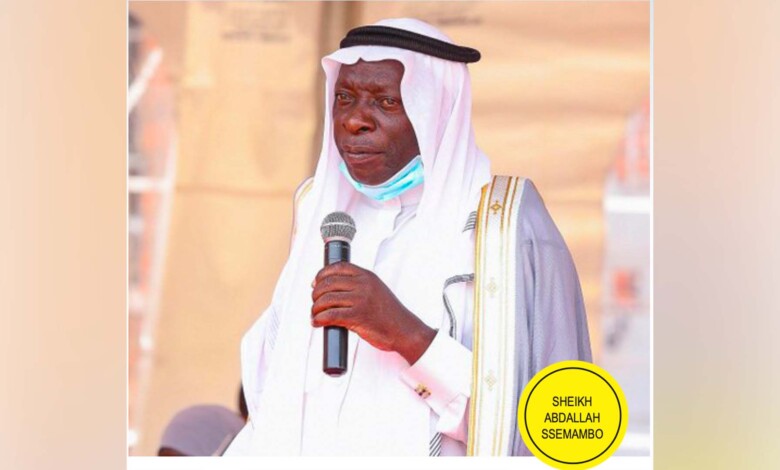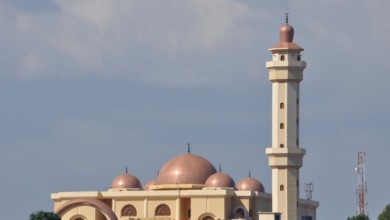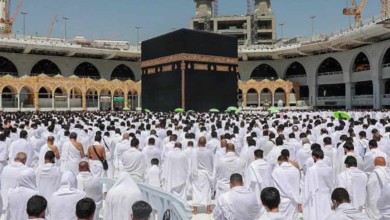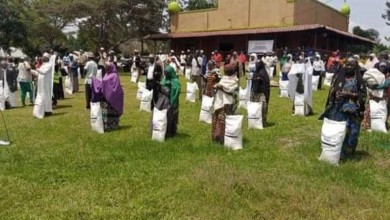Rebellion Crumbles: Ssemambo’s camp makes overtures to Old Kampala

By Issa Kigongo
A rift has erupted within Sheikh Abdallah Ssemambo’s Uganda Muslim Supreme Council (UMSC) faction, as key members now seek reconciliation with the main Old Kampala leadership under Mufti Sheikh Ramathan Mubaje.
Reliable sources told The Friday Call that Ssemambo, the former Deputy Mufti and leader of the Tagy hotel-based faction, has reportedly sought forgiveness and expressed interest in reconciling with the Mufti of Uganda, Sheikh Shaban Ramadhan Mubaje. Through private emissary, Ssemambo allegedly admitted that he “was misguided” and wants to return to the Old Kampala–based Uganda Muslim Supreme Council (UMSC) headquarters.
However, Ssemambo disowned the emissary when contacted by The Friday Call for this story. The cleric distanced himself from the reconciliation talks, indicating some people within his office could be responsible.
“I am not aware of such talks. You see, my office has many powerful leaders and it could be that one or a group of them is behind this,” Ssemambo said in a phone interview.
Ssemambo loses ground
The news come at the heels of a series of setbacks for Ssemambo. These include:
- Lack of support from the state, including President Yoweri Kaguta Museveni,
- His failure to attract recognition from top Muslim NRM national leaders such as Hajji Moses Kigongo and ministers as well as
- Unfavourable outcomes in the courts of law, including a recent case involving Counsel Kamulegeya among others
Insiders also report that Sheikh Ssemambo’s health has deteriorated, and he has been spotted moving around town without a security detail or stable base—an indicator that the Gangu faction’s influence has sharply declined.
His request reportedly includes forgiveness not only for himself but also for other General Assembly members who joined him in the breakaway group, such as Muyinda, Sheikh Irumba, and others.
Who is Sheikh Abdallah Ssemambo?
Sheikh Ssemambo rose to national prominence as Mufti Mubaje’s deputy and was long considered one of his closest allies. However, in recent years, disagreements emerged over leadership direction, constitutional interpretation, and management of UMSC affairs. These tensions culminated in the formation of the Gangu faction, where Ssemambo was installed as an alternative mufti by his supporters—creating parallel leadership structures and intensifying the Muslim wrangles.
His faction attracted several members of the UMSC General Assembly and local religious leaders who challenged the Old Kampala leadership. However, the faction struggled to gain recognition from government institutions and key Muslim international partners.
Mubaje’s reaction
According to sources inside Old Kampala, Mufti Mubaje welcomed the idea of reconciliation but advised that Sheikh Ssemambo should submit his request formally in writing before further steps can be taken.
This approach is consistent with UMSC’s internal protocol and Mubaje’s past handling of defectors seeking to return.
Former SG Mugalu also seeks reconciliation
In a related development last month, former UMSC Secretary General Hajji Dr. Ramadhan Mugalu was spotted at Old Kampala and later at celebrations marking the birth of Prophet Muhammad (Mawlid). He reportedly asked for forgiveness and was advised to submit a formal written request and return official UMSC documents he allegedly left with after his tenure expired.
In an interview, Mugalu confirmed there were efforts geared at reconciling.
“Islam emphasises unity. It is normal for people to argue and sometimes breakup. However, reconciliation is a key virtue that we should all embrace,” Mugalu said.
Mugalu had earlier appeared on several media platforms during the Gaddafi Mosque controversy, claiming that UMSC had entered into a questionable “MOU” with businessman Kyabahwa. To date, the documents he moved with have not been returned to UMSC.






